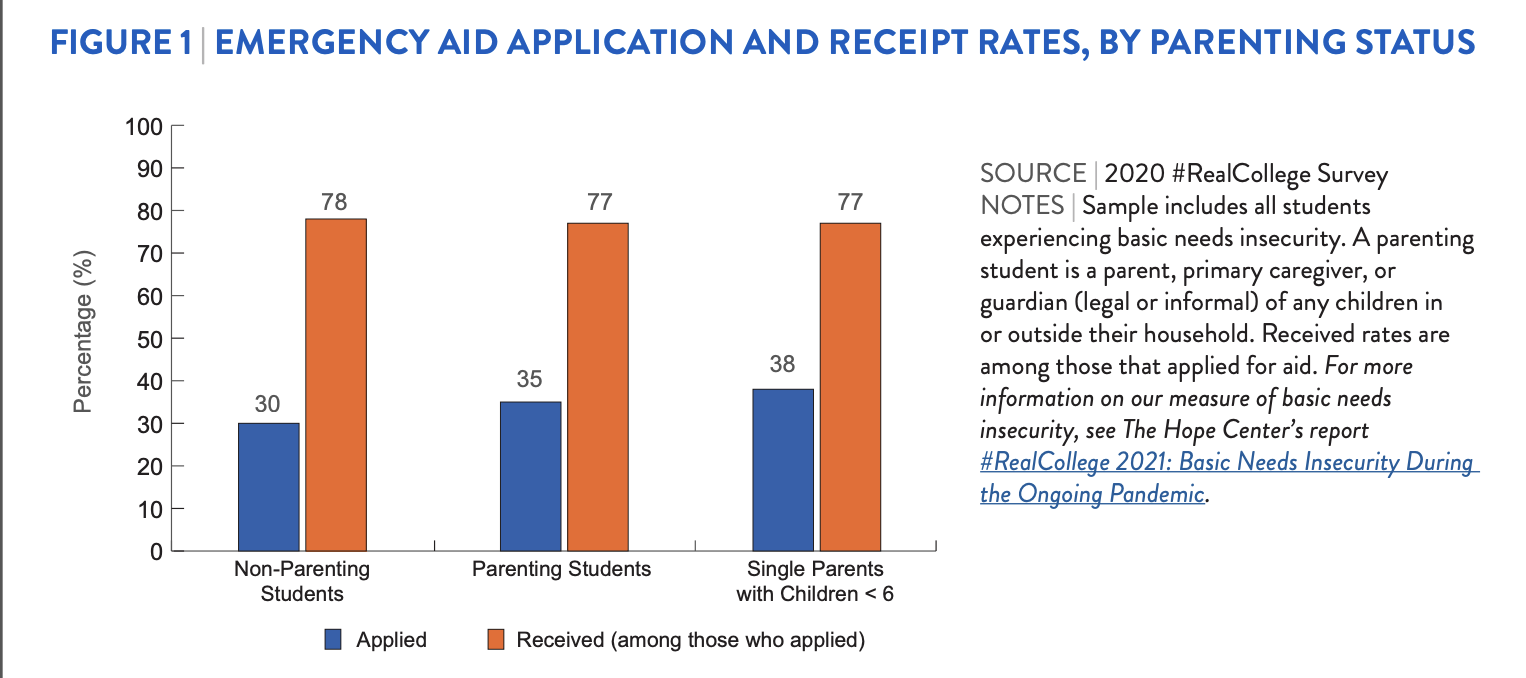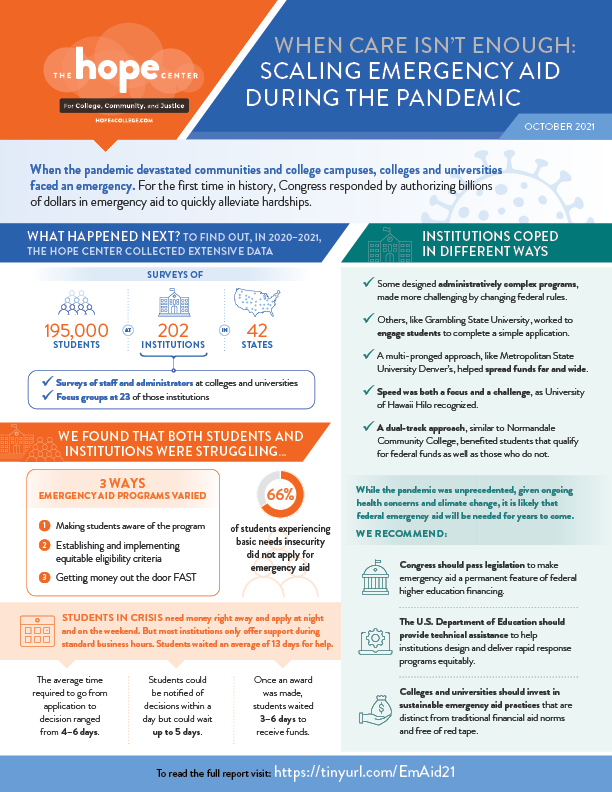Document Tag: pandemic
Self-reported COVID-19 infection and implications for mental health and food insecurity among American college students (2022)
While the COVID-19 pandemic affected mental health and increased food insecurity across the general population, less is known about the virus’s impact on college students. A fall 2020 survey of more than 100,000 students at 202 colleges and universities in 42 states reveals sociodemographic variation in self-reported infections, as well as associations between self-reported infection and food insecurity and mental health. We find that 7% of students self-reported a COVID-19 infection, with sizable differences by race/ethnicity, socioeconomic status, parenting status, and student athlete status. Students who self-reported COVID-19 infections were more likely to experience food insecurity, anxiety, and depression. Implications for higher education institutions, policy makers, and students are discussed.
Student Basic Needs: Institutional Services and Awareness, AACRAO (2020)
AACRAO partnered with The Hope Center for College, Community, and Justice at Temple
University on the March 2020 survey. The Hope Center recently released the
results of the 5th annual #RealCollege survey of students’ experiences with food and housing
insecurity; it demonstrates widespread food and housing insecurity at more than 400 colleges
and universities using data from more than 330,000 students.
The results of this survey help expand the understanding of the scope of services available at
institutions of higher education to help students meet their basic needs around food and
housing. In addition, the data include estimates of percentage of students impacted by these
issues and the degree to which the issue is part of a student success agenda. The survey was
completed by 469 institutions of various sizes, types, control and location.
The data were cleaned to leave only one response per institution.
When Care Isn’t Enough: Scaling Emergency Aid During the COVID-19 Pandemic (2021)
When the pandemic devastated communities and college campuses, colleges and universities faced an emergency. For the first time in history, Congress responded by authorizing billions of dollars in emergency aid to quickly alleviate hardships.
This report shows how colleges and universities met the challenge of emergency aid during the pandemic, drawing on a year of surveys and focus groups, fielded and conducted by The Hope Center and DVP-Praxis, that reflect the views of institutional leaders and students from coast to coast. The results offer valuable insights that should shape the future of emergency aid and student support. While the onset of the pandemic was unprecedented, its ongoing health concerns and the looming consequences of climate change ensure that knowing how to deliver emergency aid at scale will be essential to the well-being of future students. With these lessons in mind, we can all be better prepared and ready to respond.


